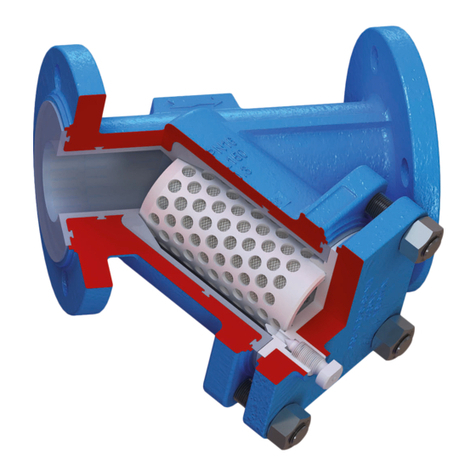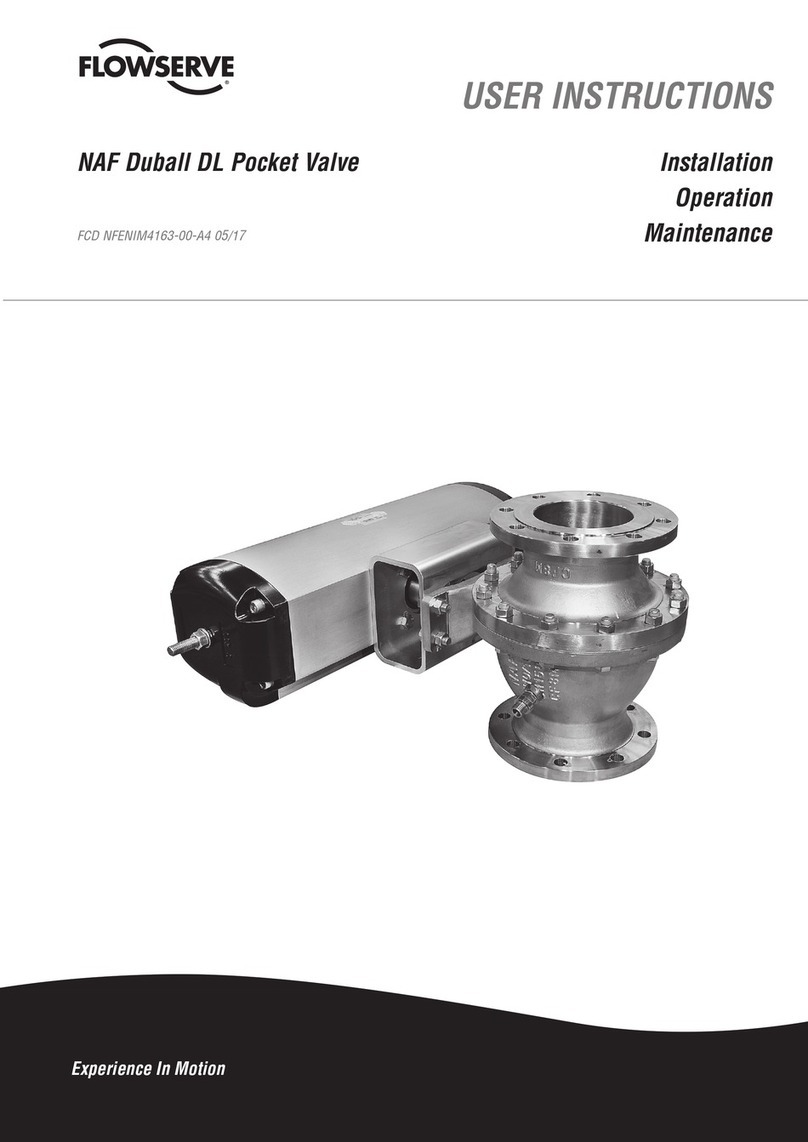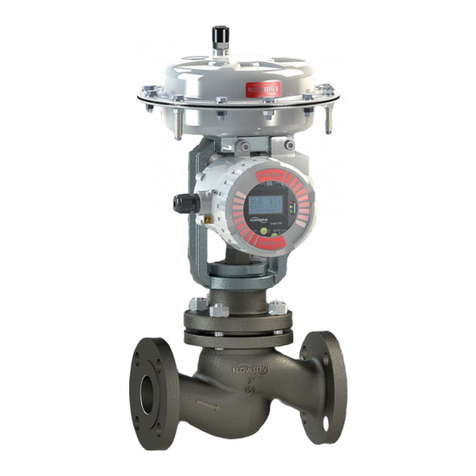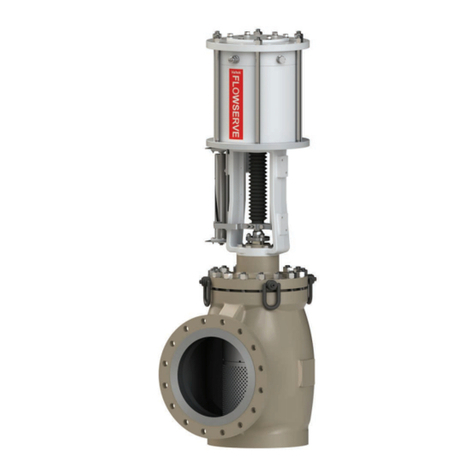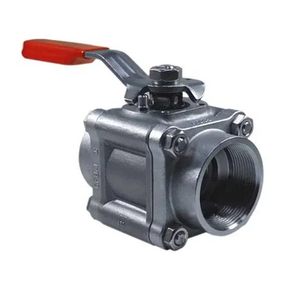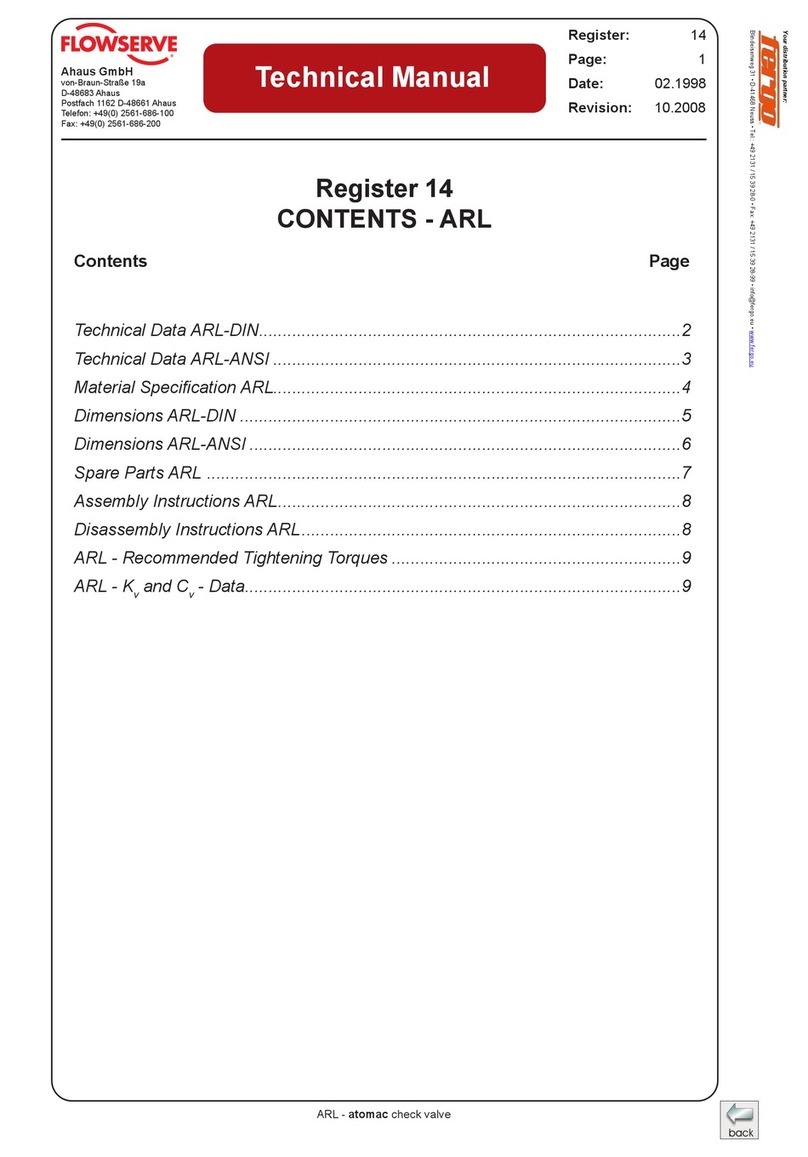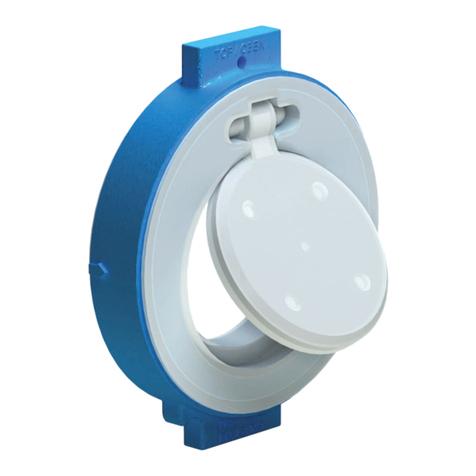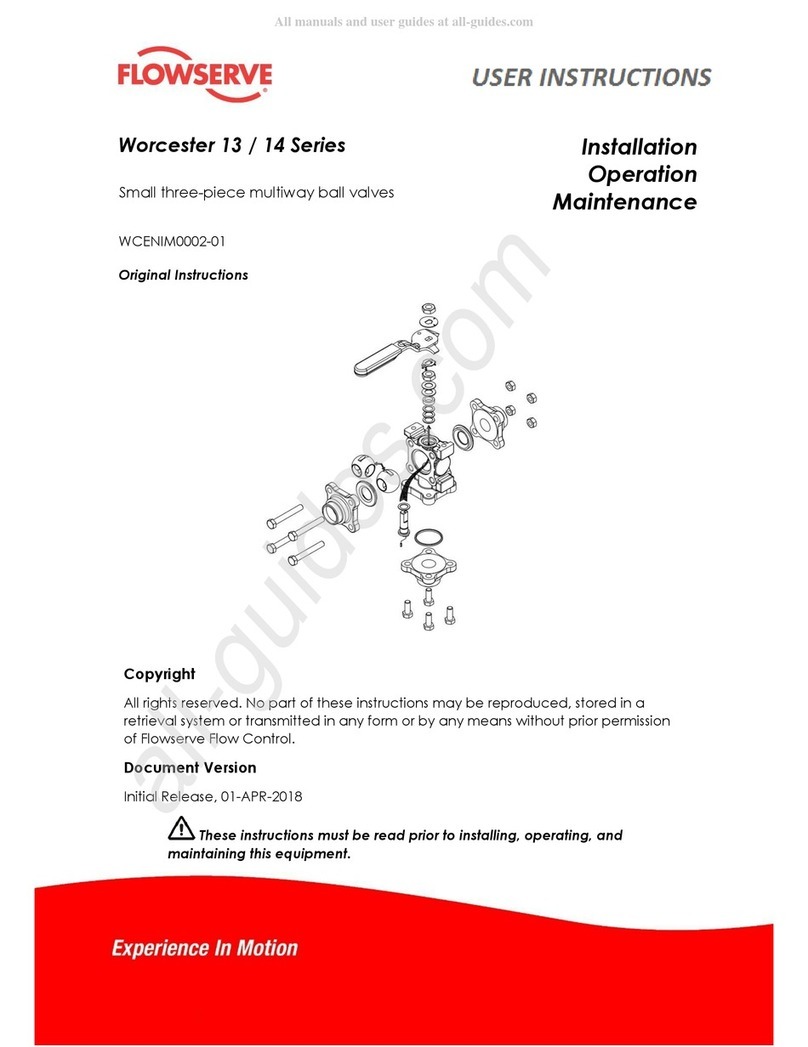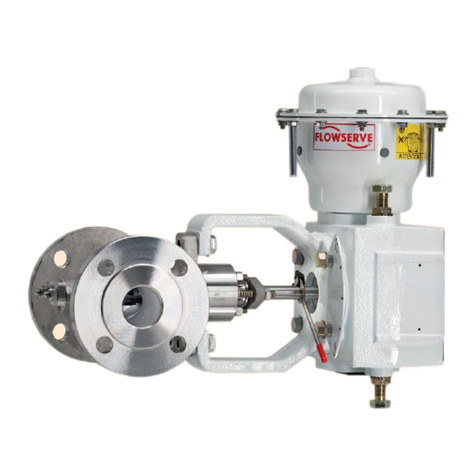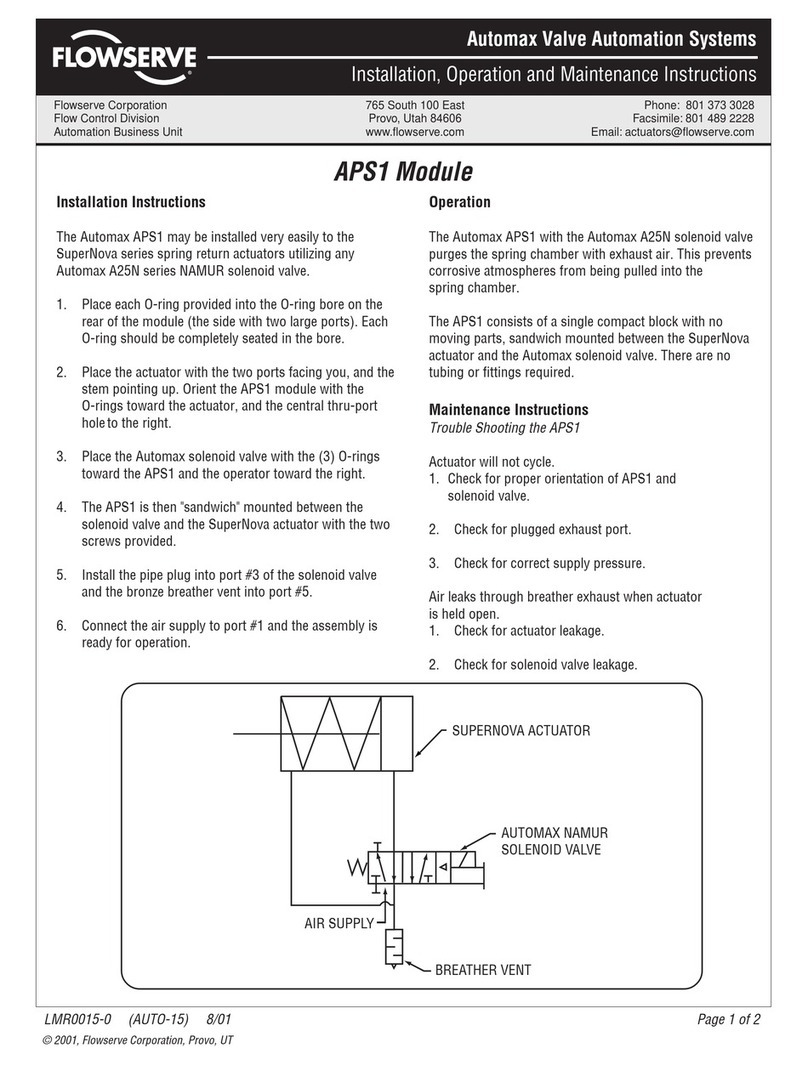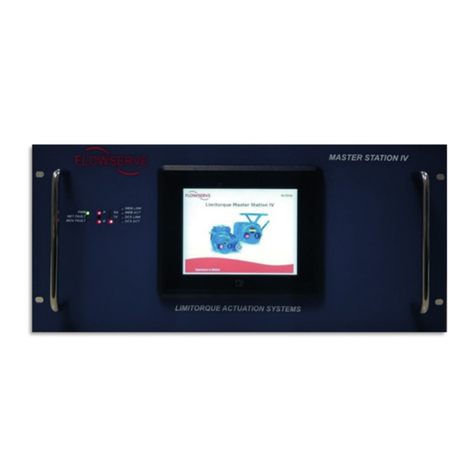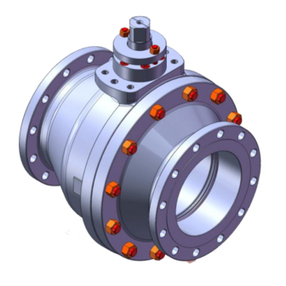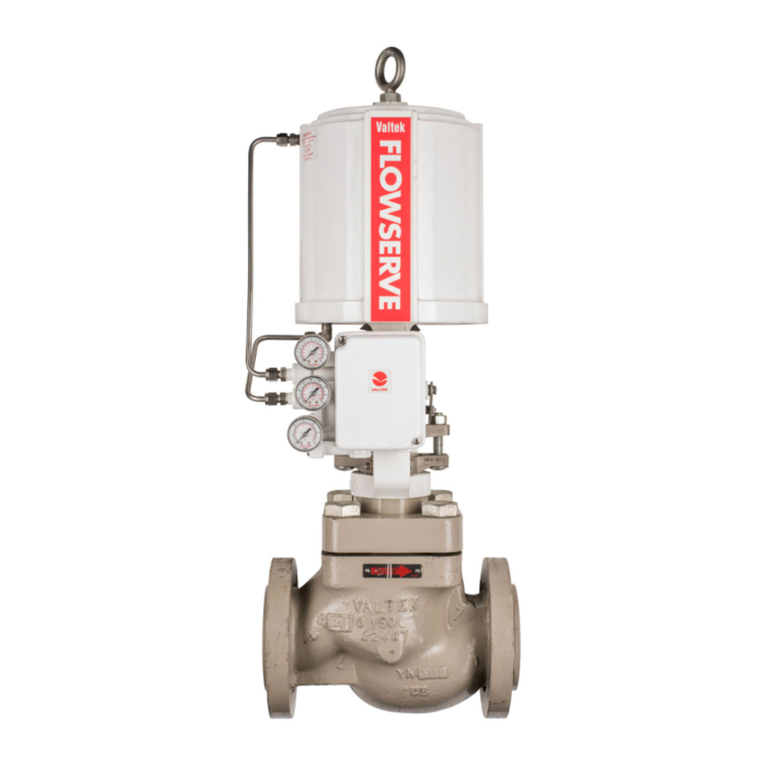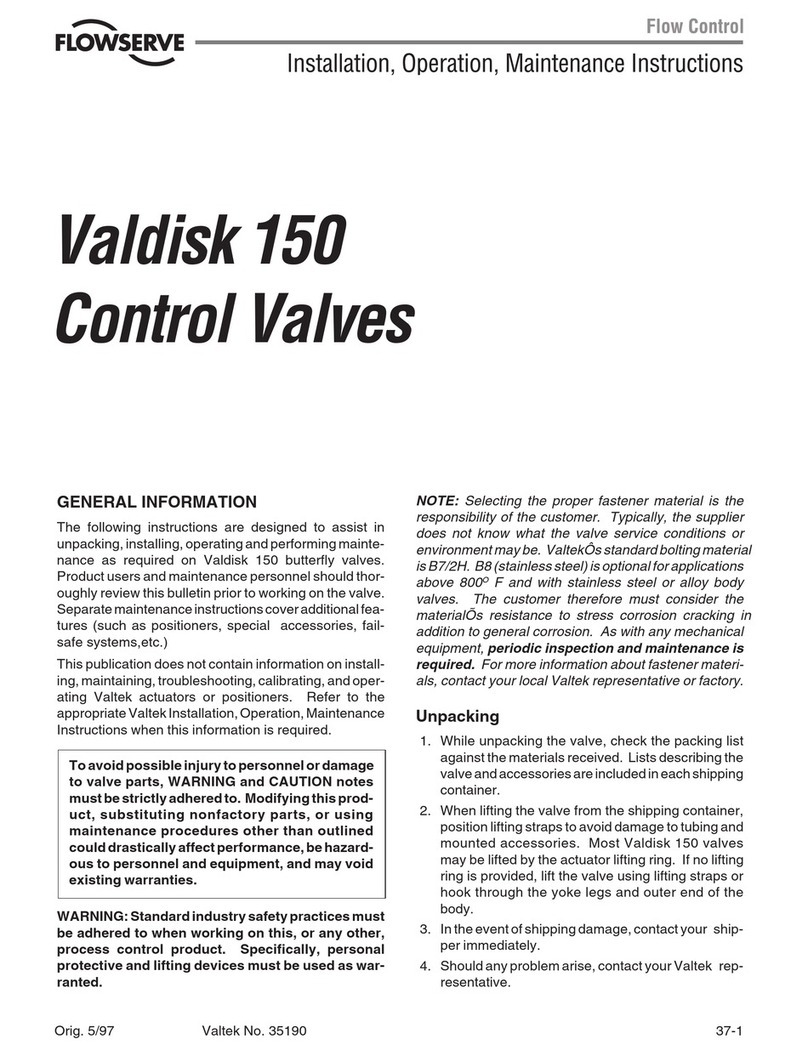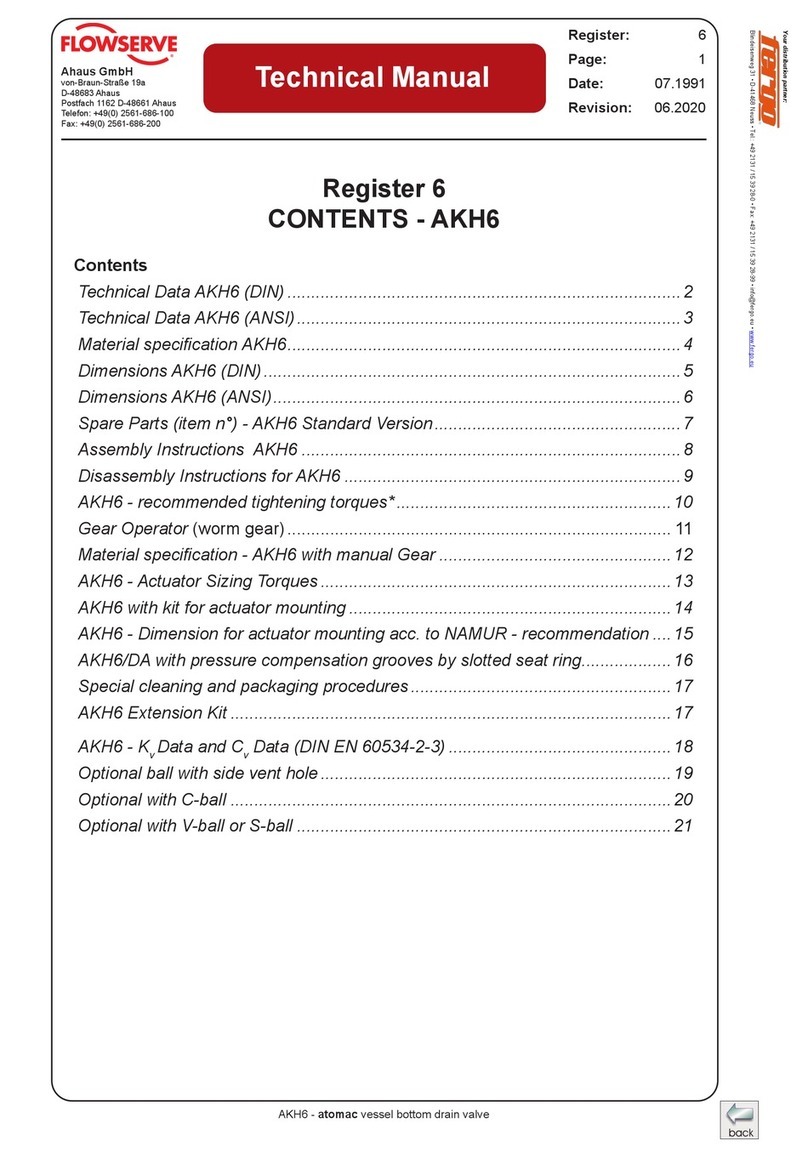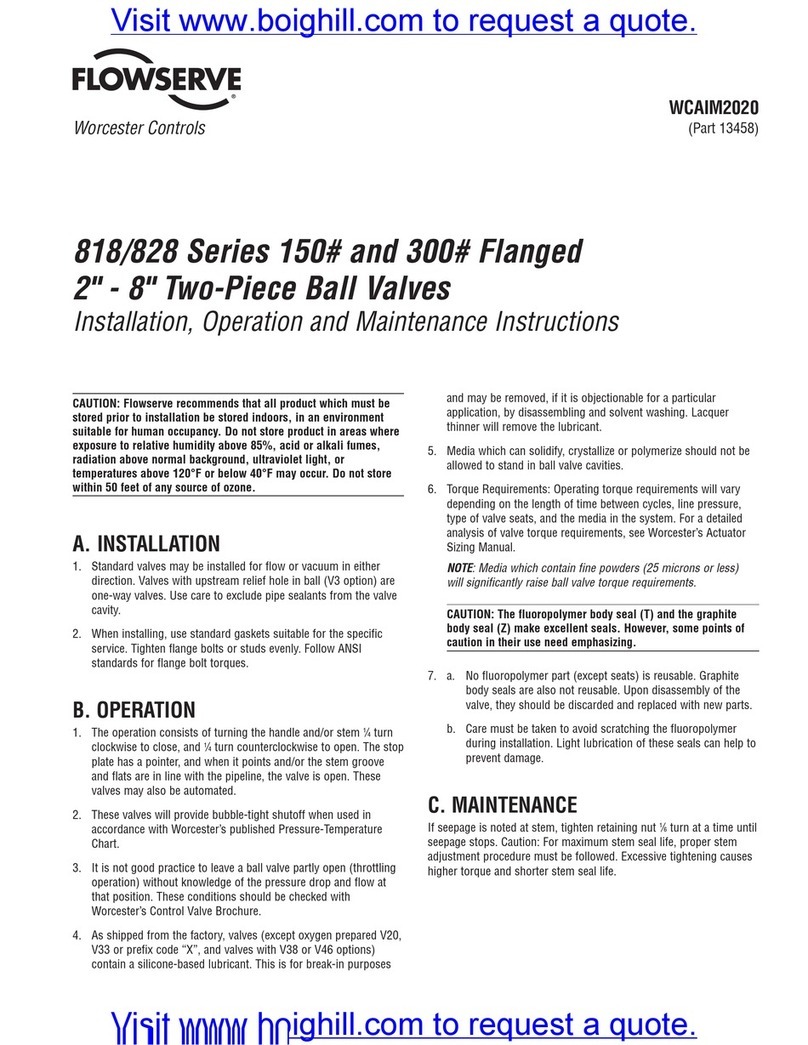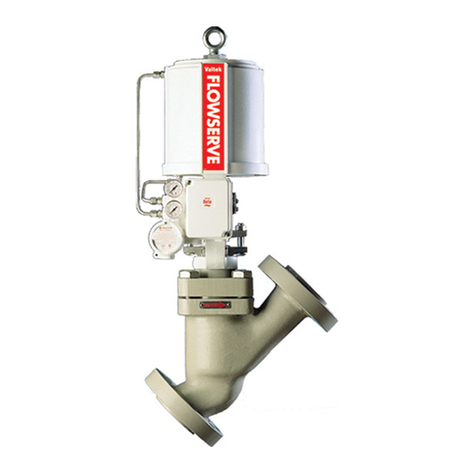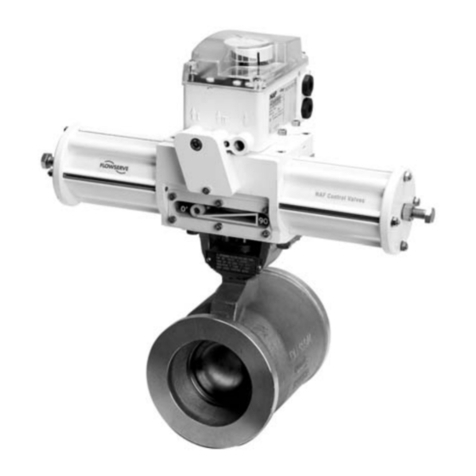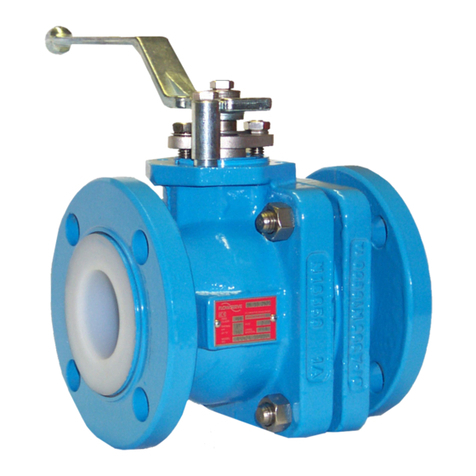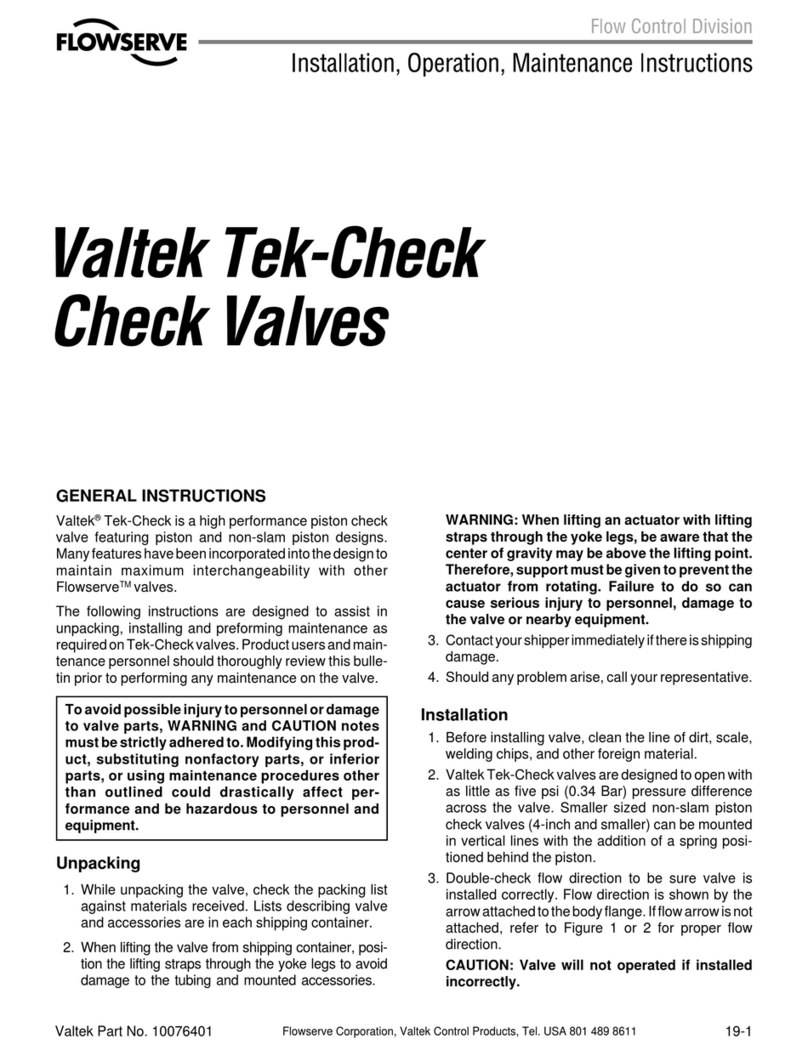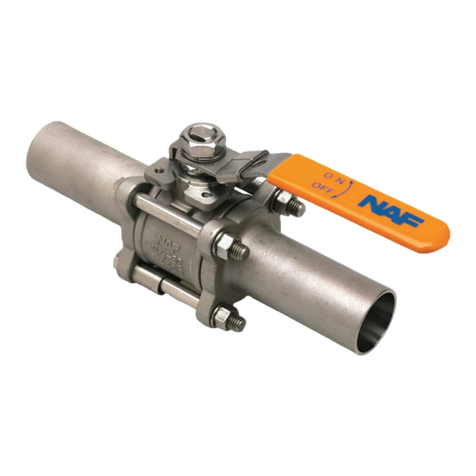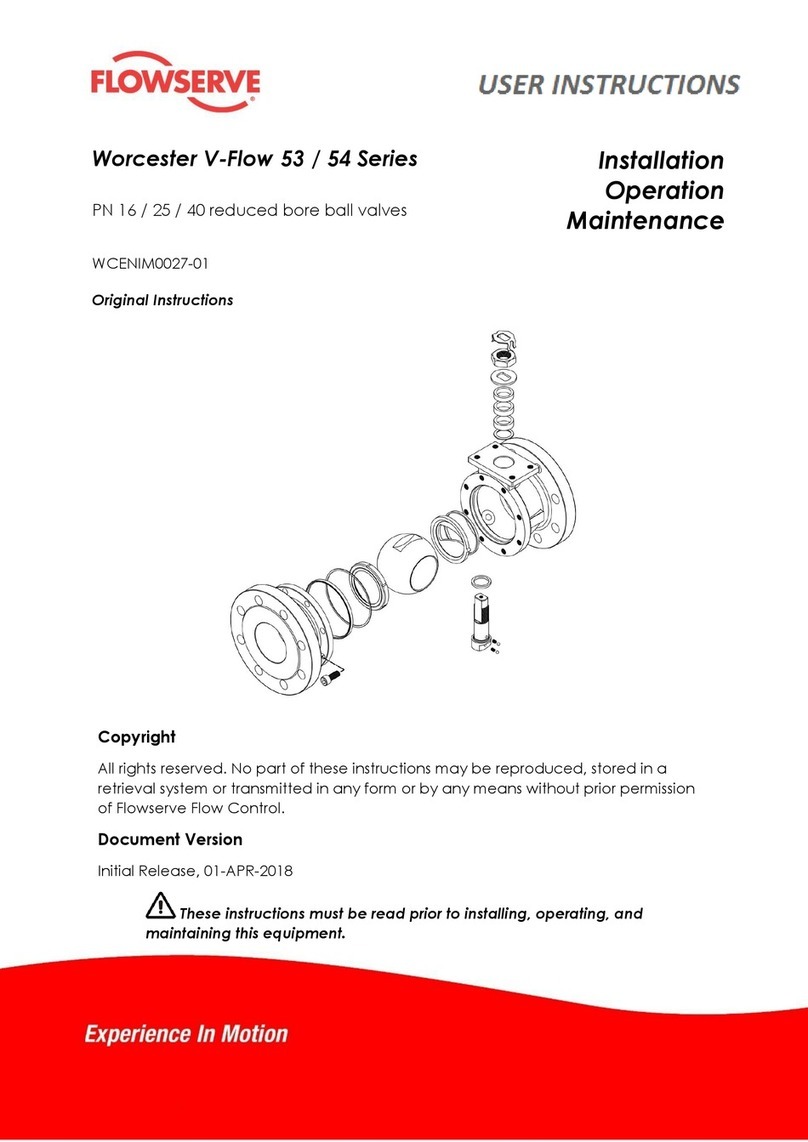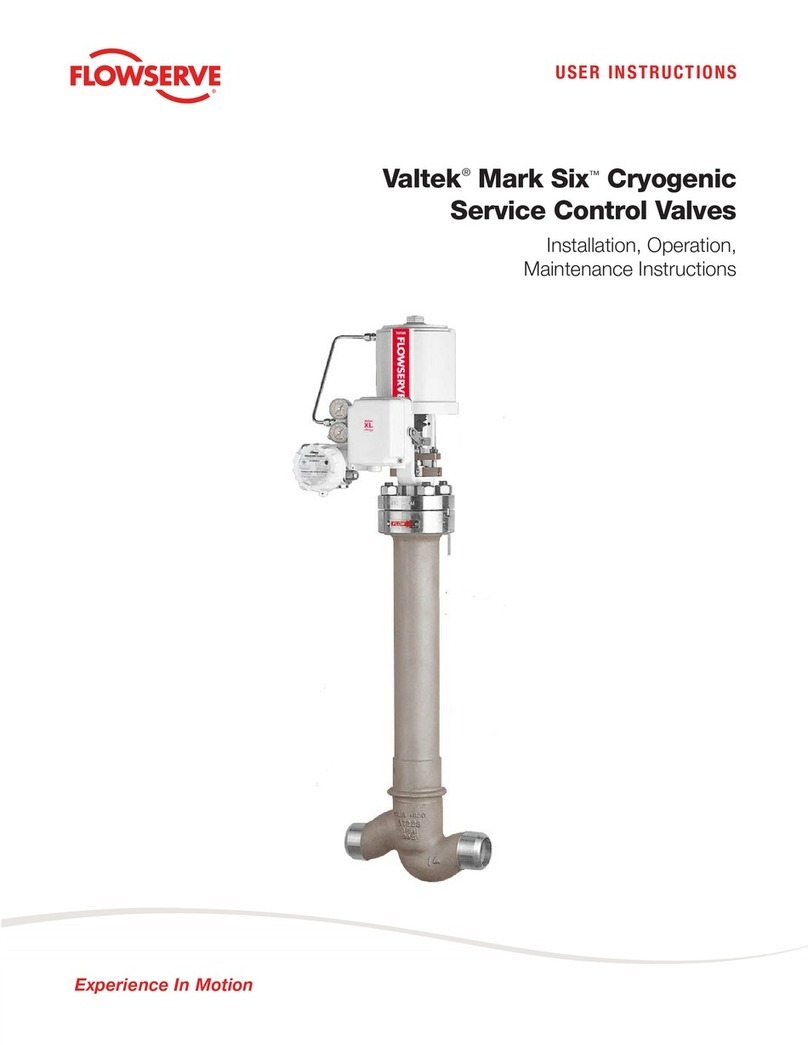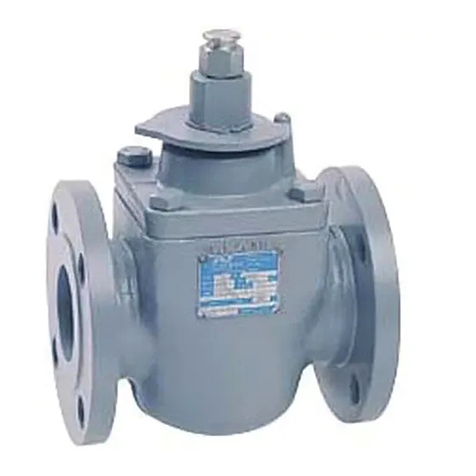
14-5
Flowserve Corporation, Valtek Control Products, Tel. USA 801 489 8611
Figure 4: Bolted Extension Figure 5: Bolted Flange Extension
Bonnet
(Item No. 40)
Extension
Bonnet
(Item No. 41)
Bolting
(Item no. 110)
Bonnet
Extension
Gasket
(Item No. 60)
Bolting
(Item no. 110)
Bonnet
Extension
Gasket
(Item No. 60)
Extension Bonnet
(Item No. 41)
Half Ring
(Item No. 13)
Bonnet
(Item No. 40)
Flange
(Item No. 73)
Note: Item numbers correspond directly to the valve's bill of material. Refer to the bill of material for specific part numbers.
CAUTION: Do not overtighten packing. This can
cause excessive packing wear and stem friction
which may impede stem movement.
7. After installing a new seat gasket, the seat ring, seat
retainer and a new bonnet gasket, lower the actua-
tor/bonnet assembly squarely into body. Be careful
to not scratch or gall plug as it enters the body.
8. Install bonnet flange bolting to finger-tightness.
Apply air pressure above the piston to seat the plug
in the seat ring. Tighten each bonnet bolt about 1/6
(one flat) of a turn at a time in a clockwise direction
around the bonnet flange. Firmly tighten all bolts
evenly and completely to compress the bonnet
gasket until the bonnet is seated metal-to-metal in
the body. Proper tightness is achieved when metal-
to-metal resistance can be felt with the wrench.
CAUTION: If the bolting is insufficiently tight-
ened, the seat ring gasket will not have enough
compression, resulting in leakage. Overtighten-
ing beyond the point of metal-to-metal resis-
tance may damage interior valve parts.
9. The amount the plug stem is screwed into the
actuator stem is not particularly important on air-to-
close valves as long as the plug fully contacts the
seat when the valve is closed. It is necessary only to
leave two to three threads exposed. For correct plug
engagement on air-to-open valves, screw the plug
stem into the actuator stem as far as possible. Apply
air pressure above the piston to drive it to the bottom
of the actuator cylinder. Back the plug stem out of
the actuator stem until the plug just touches the seat
ring. Apply air under the piston to lift the plug off the
seat and back the plug stem out of the actuator stem
exactly one complete turn.
10. Apply air over the piston to seat the plug. With the
stem clamp adjusted to the “closed”position of the
stroke indicator plate, tighten stem clamp bolting.
Disassembling Bonnet Extensions
To disassemble valves equipped with bonnet extensions,
refer to Figures 4, 5, 6 and 7 then proceed as follows:
WARNING: Depressurize line to atmospheric pres-
sure, drain all fluids and decontaminate the valve (if
caustic or hazardous materials are present). Failure
to do so can cause serious injury.
1. Remove bonnet flange bolts or nuts.
2. Remove the entire actuator/bonnet extension as-
sembly –including the bonnet and plug –by lifting it
straight out of the body.
CAUTION: Heavy assemblies may require a
hoist. Attach lifting straps to actuator yoke legs.
3. Loosen the actuator stem clamp.
4. Remove packing box bolting.
5. Remove the yoke bolting, clamps and half rings (if
present).
6. Remove the actuator by unscrewing the plug and
bonnet in unison from the actuator stem. Unscrew-
ing the plug and bonnet together prevents damage
to the plug stem and packing box wall.
WARNING:Donotallowtheplugorbonnettofall
during removal from the actuator. Serious per-
sonal injury or valve damage may result.
7. Pull the plug carefully through the packing box and
bonnet.
WARNING: Process fluid may be trapped in the
bonnet extension; therefore, be extremely cau-
tious when removing the plug from the bonnet
and bonnet extension.
IM014 Extended Bonnets.p65 8/21/01, 2:14 PM5
